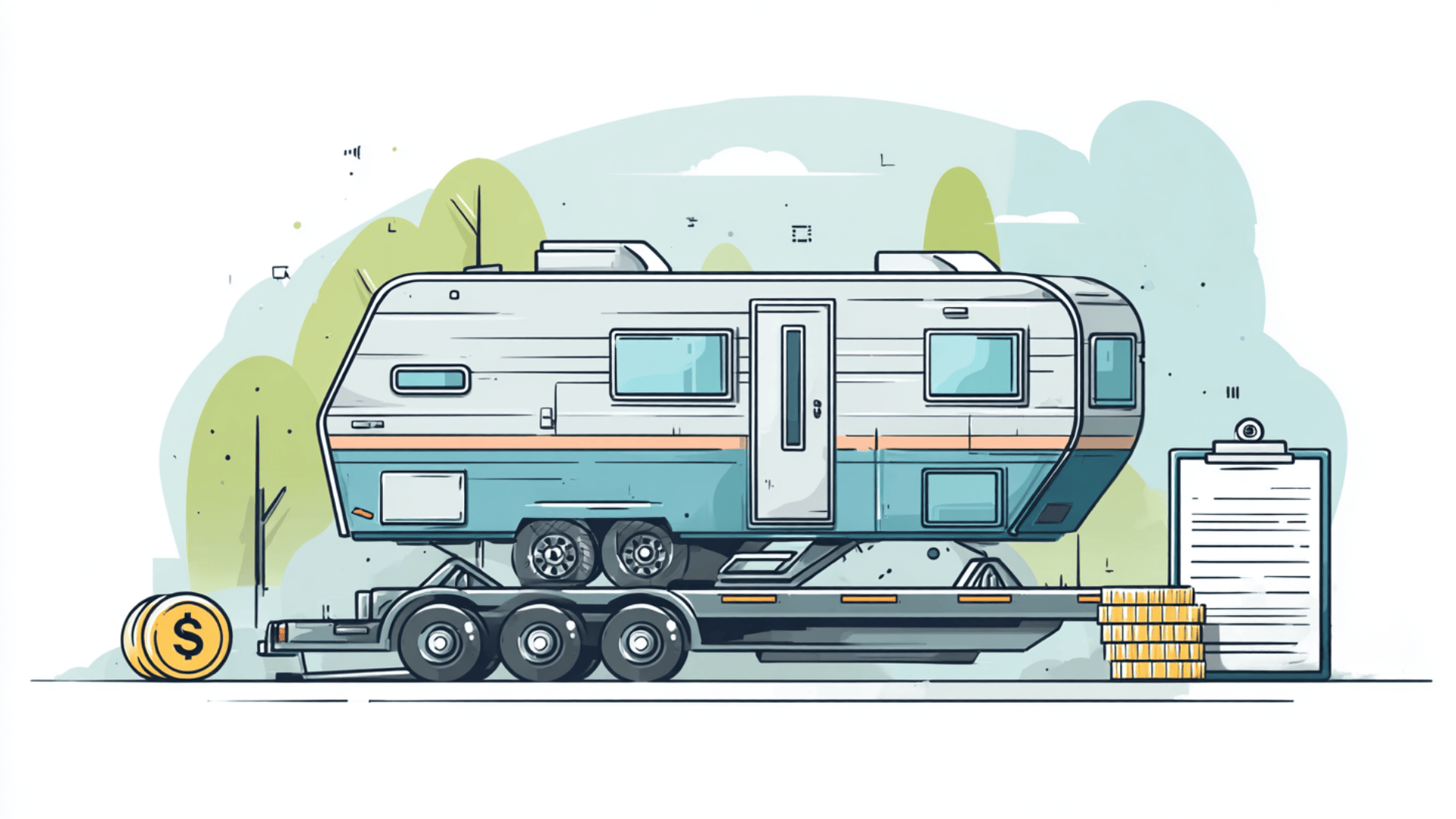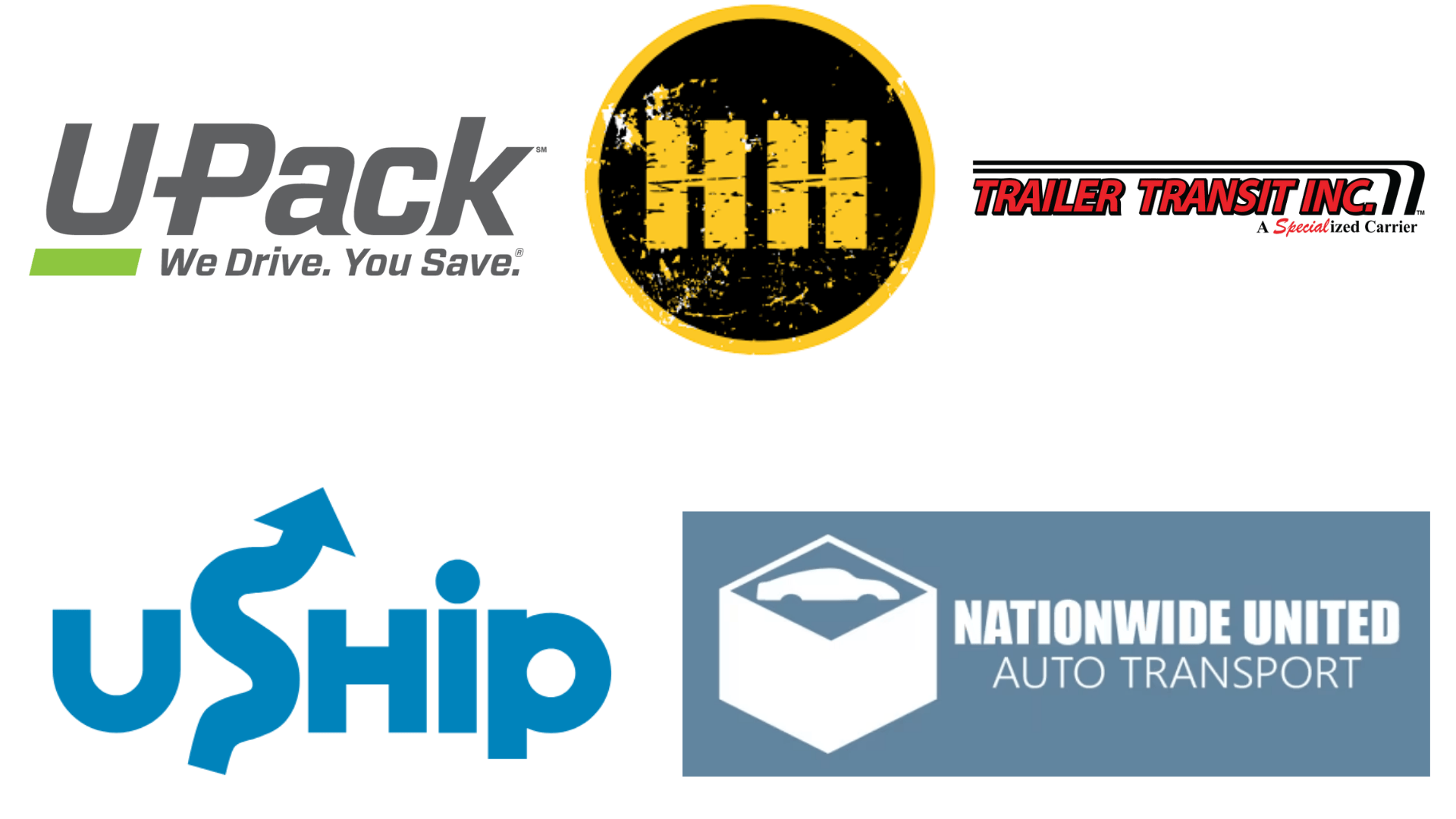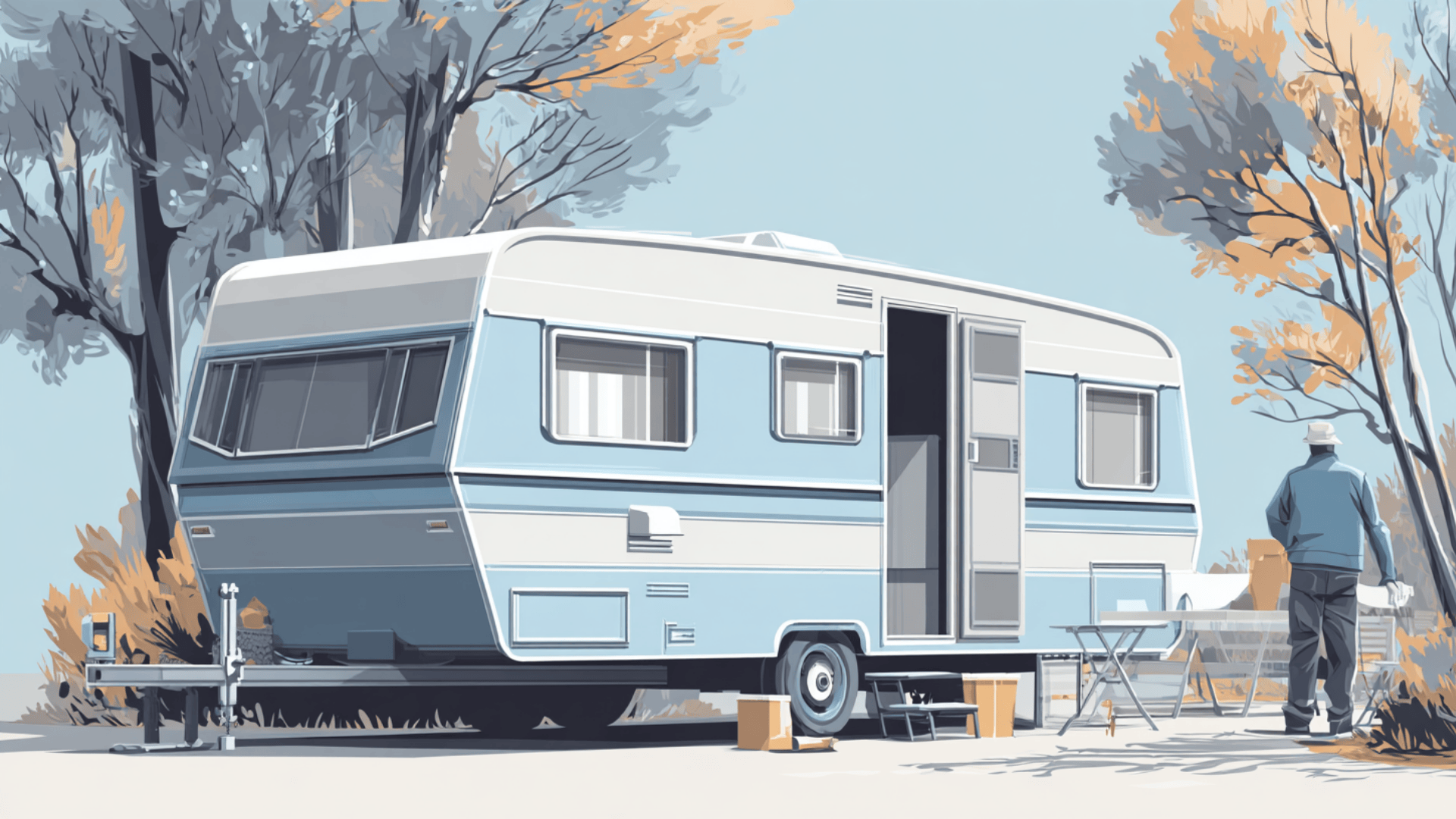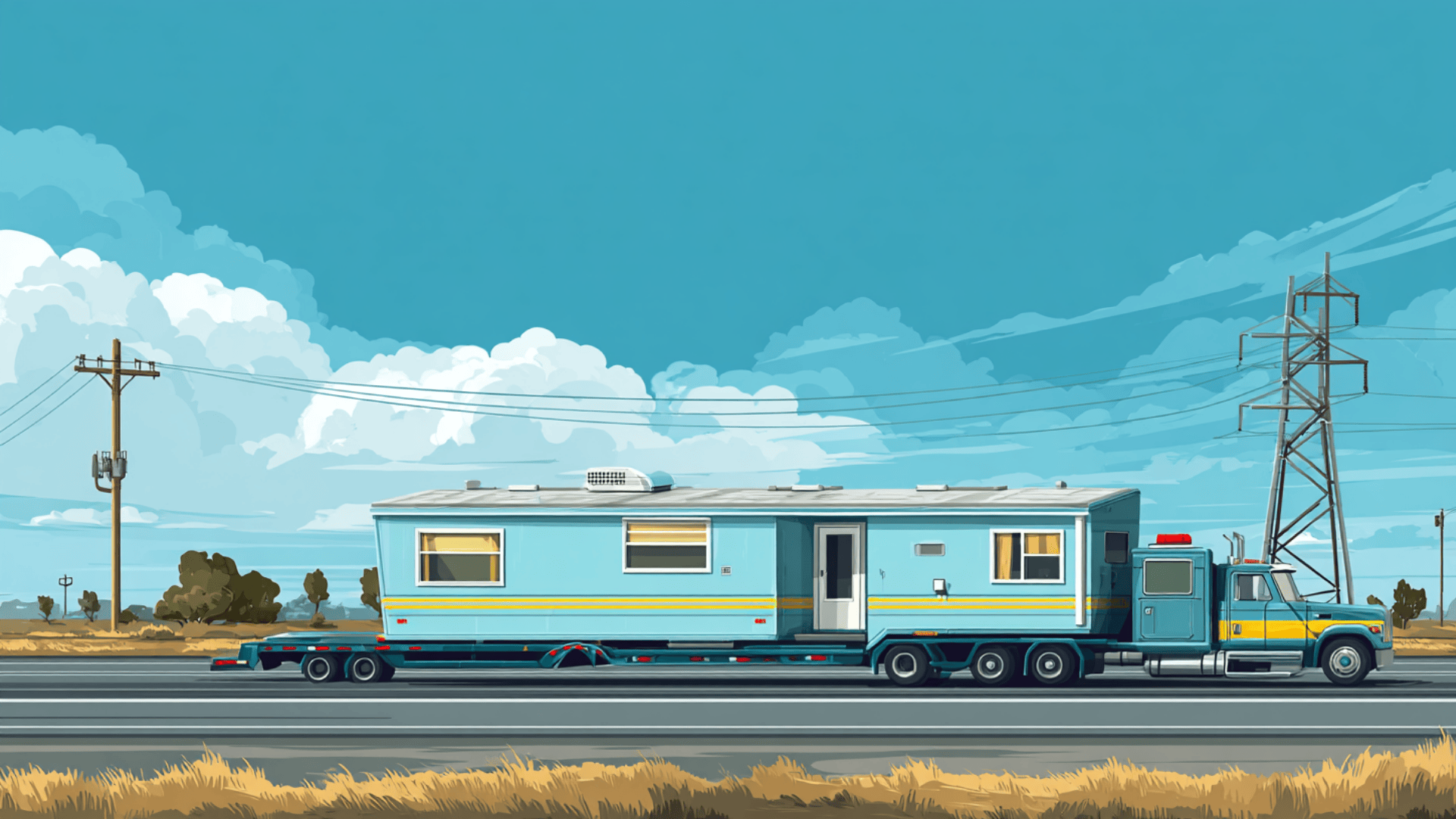Moving a mobile home can seem overwhelming at first; there’s a lot to plan, plenty of costs to consider, and many details to get right.
But finding the cheapest way to move a mobile home doesn’t have to be complicated. With a little preparation and the right approach, you can save money without sacrificing safety or quality.
In this guide, I’ll share practical ways to lower moving expenses, avoid common mistakes, and make smart decisions at every step.
You’ll come away with the confidence to plan your move wisely, spend less, and get your home where it needs to be smoothly.
What Really Impacts the Cost of Moving a Mobile Home
Several factors determine how much it costs to move a mobile home. Knowing them helps you plan and budget accurately.
- Size and Weight of the Home: Larger or heavier homes need more axles, towing trucks, and labor. Double-wide or triple-wide units cost more to disassemble, move, and reassemble.
- Distance and Route Conditions: Longer moves increase fuel, toll, and labor costs. Routes with hills, sharp turns, or narrow roads may need escort vehicles and extra planning.
- Permits and Regulations: Most areas require moving permits. Some moves also need escort vehicles or police assistance for wide loads. Handling permits yourself can lower costs.
- Setup and Utility Connections: After transport, reconnecting plumbing, power, and leveling the home adds to the price. Site conditions and setup needs affect total cost.
- Age and Condition of the Home: Older or damaged homes often need repairs or tire replacements before moving. Stronger structures are quicker and cheaper to relocate.
Each factor directly impacts your final moving cost, so review them carefully before hiring a mover.
How Much Does It Cost to Move a Mobile Home?

Moving a mobile home can cost anywhere from $3,000 to $15,000 or more, depending on the size, distance, and setup needs. The price usually includes transport, permits, basic insurance, and setup at the new site.
Average Cost Breakdown by Size and Distance:
| Home Type | Local Move (≤50 miles) | Long-Distance Move (50–200 miles) | What’s Usually Included |
|---|---|---|---|
| Single-wide | $3,000–$8,000 | $8,000–$12,000 | Transport, permits, releveling, and reconnection of utilities |
| Double-wide | $8,000–$15,000 | $13,000–$20,000 | Disassembly, escort vehicles, permits, setup, and reattachment |
| Triple-wide or larger | $15,000–$25,000+ | $20,000–$30,000+ | Extra trucks, escort cars, complex permits, and foundation setup |
Moving a mobile home can be costly, but understanding the factors that drive the price helps you plan. Use these ranges to compare quotes and find the most cost-effective option.
Tips for Moving a Mobile Home on a Budget

Moving a mobile home doesn’t have to cost a fortune. With the right planning and a few smart choices, you can cut expenses while keeping your move legal and safe.
1. Get Multiple Moving Quotes
Gather at least three quotes from licensed mobile home movers to compare rates and services. Ask what’s included- some handle permits and setup, while others charge extra.
Check insurance coverage and reviews before choosing. Comparing properly can save thousands and help you find a mover who offers value, not just the lowest price.
2. Move During Off-Peak Seasons
Moving in colder months or mid-week usually costs less. Summer weekends are busier, so prices rise and permits can take longer to process.
Ask movers about off-season or weekday discounts to save more. Choosing the right timing can reduce labor rates and make scheduling easier, giving you flexibility without the premium cost.
3. Prepare the Home Yourself
Handle basic prep to cut labor costs. Remove skirting, decks, and exterior fixtures, then disconnect utilities like water, gas, and power.
Inside, secure loose items and clear space around the home. Doing this ensures movers can work quickly and safely, saving both time and money without compromising the structure’s condition
4. Handle Permits Independently
Permits are required for every mobile home move, but you can apply for them yourself. Contact your local housing or transportation office, provide proof of insurance, and pay the small fee.
Handling this step independently helps you stay compliant while avoiding extra service charges from movers, who often add permit fees.
5. Consider Partial DIY Options
For short local moves, partial DIY can be practical. With the right towing gear, permits, and insurance, you can handle part of the move yourself.
Hire professionals only for tasks like setup or escort services. This approach keeps the process safe while cutting overall costs, especially for smaller, in-park relocations.
Reliable Mobile Home Moving Service Providers

Choosing a reliable mover makes a big difference in safety and cost. Below are some of the top mobile home moving companies, known for dependable service and transparent pricing:
| Company | Estimated Cost Range | Services Offered |
|---|---|---|
| U-Pack | $3,000–$10,000 | Nationwide transport, trailer rentals, and partial DIY options. |
| Heavy Haulers | $5,000–$15,000+ | Full-service moves with permits, escorts, and route planning. |
| Trailer Transit Inc. | $4,000–$12,000 | Transport, setup assistance, and re-leveling for single- and double-wide homes. |
| uShip | $2,500–$9,000 | Online marketplace to compare verified mover quotes and prices. |
| Nationwide United Auto Transport | $6,000–$18,000 | Long-distance and interstate moves with permits and insurance. |
How They Ensure Safe Transport
Moving a mobile home safely starts with choosing the right professionals.
Reliable movers use specialized trailers, towing trucks, and escort vehicles to ensure smooth, damage-free transport.
The home is lifted with hydraulic jacks, secured with industrial straps, and inspected for stability before travel. Every route is planned carefully to avoid tight turns or low bridges, ensuring a safe and efficient move from start to finish.
Tips for Hiring a Reliable Mobile Home Mover
- Check license and insurance: Always verify that the mover is licensed and insured for mobile home transport in your state.
- Ask for itemized quotes: Request a detailed breakdown of costs so you understand what’s included- transport, setup, permits, or extras.
- Read reviews and compare past jobs: Look for companies with strong reputations, positive reviews, and proven experience moving homes similar to yours.
Taking time to research and compare movers helps you choose one that’s dependable, transparent, and capable of moving your home safely.
Preparation Steps Before the Move (Printable Checklist)

Proper preparation helps prevent damage and delays during transport. Here’s what to cover before moving day:
- Pre-move checklist: Create a detailed list of tasks, including removing skirting, disconnecting utilities, securing loose items, and clearing the area for movers.
- Site prep at the new location: Ensure the site is level, accessible, and ready with utility hookups, foundation blocks, and entry clearance.
- Protect fragile or heavy items: Wrap glass, mirrors, and breakables securely. Remove or anchor heavy furniture and appliances to prevent shifting during transport.
Preparing ahead makes your mobile home move faster, safer, and less stressful. Use this [Checklist]to stay organized and make sure every step is handled on time.
Common Mistakes to Avoid
Moving a mobile home takes planning, and even small errors can lead to delays or extra costs. Knowing what to avoid helps you stay organized and keep the process smooth:
| Mistake | Why It’s a Problem | Better Approach |
|---|---|---|
| Skipping permits or paperwork | It can lead to fines or legal issues during transport. | Always secure the required state and local moving permits before starting. |
| Hiring unlicensed movers | Increases the risk of property damage and the likelihood of being uninsured. | Verify licenses, insurance, and past experience before hiring. |
| Not preparing the site | Causes delays and extra labor costs once the home arrives. | Clear and level the new site in advance, ensuring proper truck access. |
| Leaving items inside | Loose or heavy items can shift and damage walls or floors. | Remove or secure everything inside the home before transport. |
| Ignoring post-move inspection | Small issues can turn into costly repairs if missed early. | Inspect the structure, utilities, and foundation immediately after setup. |
Avoiding these mistakes keeps your move efficient, reduces risks, and helps the home arrive in good condition.
After the Move: Setup and Inspection
Once your mobile home is delivered, a few key steps make it safe and livable. Taking time for setup and inspection ensures everything works properly before you move in:
- Reconnecting utilities: Have licensed professionals reconnect water, gas, and electricity. Test all systems to confirm they’re working safely.
- Leveling and securing the foundation: Ensure the home is properly leveled and anchored to prevent shifting or structural damage.
- Post-move inspection tips: Check walls, doors, and windows for cracks or gaps, and inspect for leaks or loose fittings.
Finishing these tasks promptly helps prevent issues later and keeps your home stable and comfortable.
Final Thoughts
Moving a mobile home doesn’t have to be stressful or expensive. With the right plan and a few smart choices, you can keep costs low and the process simple.
You’ve now got a clear idea of what affects pricing and how to approach your move with confidence.
With a little preparation and the right help, you can handle the process confidently, as the goal isn’t just saving money, it’s making sure your home arrives safely and ready to live in.
So, as you plan your next move, use these insights on the cheapest way to move a mobile home to make every step smoother, safer, and easier on your budget!















